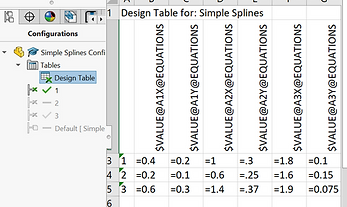Design of Stall-Resistant Control Fins
As part of a UROP with General Dynamics, I worked to design stall-resistant control pectoral fins for advanced adaptive robotic fish. I developed generative design scaffolding to create fins in Solidworks, which could then be fabricated and assessed on a testing apparatus. I also explored bio-inspired design elements, such as tubercles, to maximize the efficiency of the pectoral fins.
Additionally, I designed a testing process for the fins. Our research team modified a robot fish design used by a previous team and added modular interfaces to test various designs for pectoral fins, caudal fins, and tails. We also re-fabricated the apparatus that mounted to the testing pool and held the fish aloft to make it more robust by machining originally 3D-printed parts from stainless steel, which will not rust.

Testing Pool Apparatus
I designed a force block to measure forces exerted on the pectoral fin. The fin is mounted to a freely pivoting plate in the force block that can move as the fin experiences an upward lift force. Force sensors, which work in tension, are mounted to a fixed plate on the force block and to the pivoting plate, and can measure the lift force on the fin as the pivoting plate moves. The position of the sensor in the force block along the line of action of the fin can also be changed to amplify the signal from the sensor. As we changed the angle of attack of the fin, the force sensor could tell us at which angle the fin experiences maximum lift, and therefore stall.
Additionally, I created a set of 3D-printed fins with varied bio-inspired designs to use for the initial round of testing on our fish apparatus. Using the output from the force sensors, I was able to see which fins resist stall for the greatest angles of attack. The force sensor readings could then be used as inputs for a fitness function in a genetic algorithm created in MATLAB. The genetic algorithm would output new fin designs, which could be easily generated in Solidworks using design tables and configurations.

Force Block with Sensor Measuring Lift Forces


Generative Design Scaffolding in Solidworks:
The fin shape can be parameterized with the positions of a series of points that define the airfoil, leading edge, and trailing edge shapes of the fin. These coordinates are inputs in a design table that generates fin designs automatically.